Apr
29
2011
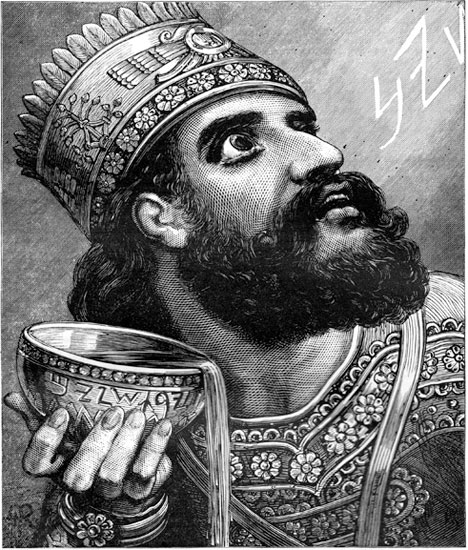
In his ground-breaking and fascinating The Handwriting on the Wall, [1] James Jordan writes:
God intends to teach Nebuchadnezzar what true wisdom is, by giving him advisors who have genuine knowledge of good and evil, men who call evil “evil” and good “good” (Isaiah 5:20–21). In Daniel 2-5, we shall repeatedly see the false wisdom of the Chaldeans fail, and the true wisdom of God’s people triumph.
Continue reading
Comments Off | tags: Belshazzar, Covenant Theology, Daniel, James Jordan, Nebuchadnezzar | posted in Biblical Theology, Quotes
Jan
28
2011
or Goblet of Fire
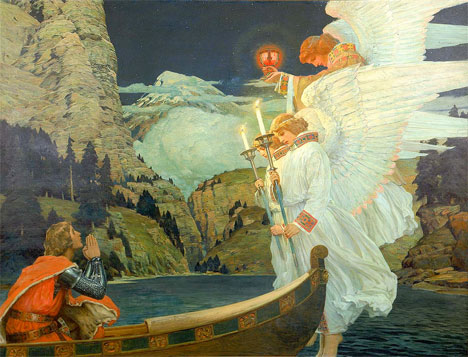
“And the times of this ignorance God winked at;
but now commandeth all men every where to repent…” Acts 17:30
Reading the Bible without an understanding of Creational and Covenant structures is like watching test cricket without knowing the rules. It’s not unusual for even the best commentators to be distracted by something as inconsequential as a lost seagull. But every moment is part of a bigger picture. Isaiah can seem tedious at times, but it’s a long game. Let’s look at Isaiah 4:2-6, which relates the purging of exiled Israel to the jealous inspection in Numbers 5. In this case, she comes up trumps.
Continue reading
1 comment | tags: AD70, Belshazzar, Compromise, Daniel, Intermarriage, Isaiah, Lampstand, Literary Structure, Numbers, Numbers 5, Pentecost, Pharisees, Systematic typology, Tabernacle, Witness | posted in Bible Matrix, Biblical Theology, The Last Days, The Restoration Era
Sep
7
2010
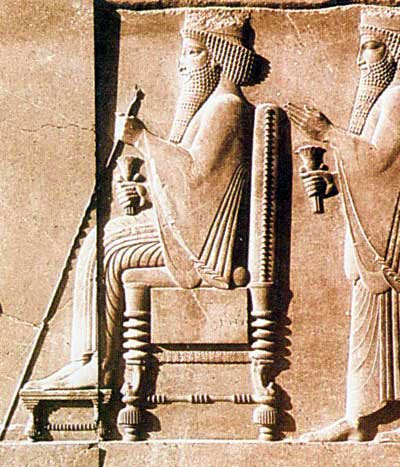
Of course, God’s new golden-haired boy got things wrong, as all Adams do when given the opportunity of glorious kingdom. The metal man in his dream (the new “empire-Tabernacle”) only had gold at the head, but King Nebuchadnezzar’s obelisk was gold from head to foot. This new king, under whom Israel was now a “Covenant vassal,” would be taught by God that he, too, was subject to a higher authority.
Continue reading
Comments Off | tags: Ahasuerus, Belshazzar, Covenant Theology, Daniel, Esther, Haman, James Jordan, Matthew, Mordecai, Nebuchadnezzar, Persia, Revelation | posted in Biblical Theology, The Last Days, The Restoration Era
Jun
15
2009
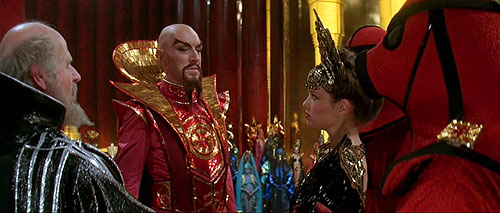
One major difference between Jordan and other preterists is his identification of Paul’s “man of sin.” Jordan is correct in naming the Herods rather than Nero because he understands biblical typology better.
Continue reading
2 comments | tags: Belshazzar, cherubim, Daniel, Esther, Film, Herod, James, James Jordan, Joseph, Mordecai, Nero | posted in Biblical Theology, The Last Days, The Restoration Era
Apr
10
2009
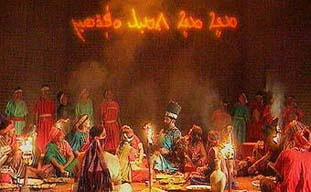
Belshazzar curses the day he let the Chaldeans talk him into signing up with Facebreadbook.
“In the same hour the fingers of a man’s hand appeared and wrote opposite the lampstand on the plaster of the wall of the king’s palace; and the king saw the part of the hand that wrote.” Daniel 5:5
“The fact that the Watcher Lampstand oversees the Facebread in the Temple means that Israel undergoes a continual inspection of jealousy. God watches all the time. In Daniel 5, the Lampstand “arrives” and sees Belshazzar’s face, “facebread” because it is at his great “bread”, and his face is undone as his “splendours change”. It is precisely as Belshazzar is drinking the wine that the judgment appears, as in the case of the woman in Numbers 5. As a priestly agent is involved in bringing judgment in Numbers 5, so Daniel is involved in bringing judgment in Daniel 5. As the woman’s loins are undone, so are Belshazzar’s. The woman’s judgment is barrenness; in the case of Belshazzar the king, the judgment is the same: no future.”1
Notice the “Holy Place” configuration. The Lampstand, the Table, and the graven Word (Ark). Daniel is the Incense Altar, the accepted elder. Why do pictures of this event never include the Lampstand? It is crucial.
_____
1 James B. Jordan, The Handwriting on the Wall, p. 289.
See also Jesus at Belshazzar’s Feast: An Explanatory Disquisition on an Aspect of the Story of the Woman Taken in Adultery for an interesting read.
Comments Off | tags: Babylon, Belshazzar, Daniel, James Jordan, Lampstand | posted in The Restoration Era
Apr
10
2009
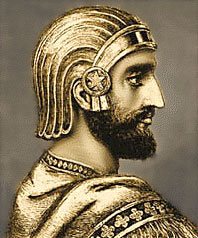 For the ancient world, a garden, a house, a city or a temple was like a woman. An invading army, after storming through the gates of a city, would rape the virgins. It was a brutal reminder that, like the women, the conquered city was not impregnable.
For the ancient world, a garden, a house, a city or a temple was like a woman. An invading army, after storming through the gates of a city, would rape the virgins. It was a brutal reminder that, like the women, the conquered city was not impregnable.
“In order to understand this, we have to think like ancient Hebrews, and not like modern people… Adam was supposed to guard the garden, and he was also supposed to guard his wife.
The Song of Solomon compares the woman to a garden several times in the course of the book. In all languages, the words for city, garden, and the like are feminine, and we speak of a city as “she” in English today.
Let us take a look at the city in the Bible, remembering that what is said of the city is also true of the house, tent, Temple, Tabernacle, and other enclosed homes for humanity. The city has walls and gates. The purpose of these walls and gates is to keep the enemy out. The goal is that the city be impregnable, and note that English word – it directly connects the city with the woman. Thus, the city has to be a virgin, sealed against attack. Jerusalem is referred to as an impregnable virgin repeatedly in Scripture (2 Kings 19:21; Is. 37:22; Jer. 14:17; 18:13; Jer. 31:21; Amos 5:2). The attack on Jerusalem is thus the rape of a city (Lam. 1:15; 2:13)… Just as Eve was “built” from Adam (using an architectural term, Gen. 2:22), so Jerusalem would be rebuilt as a virgin (Jer. 31:4)… Thus, the safety and security of the virgin daughters of Israel was a symbol of the safety and security of the whole land. Their inviolability corresponded to the inviolability of the whole culture (Lam. 1:4; 2:10).”
In the case of Babylon, its walls and gates were impregnable. The city was built on the Euphrates river, which ebbed into the city under the wall. Even the banks of the river were protected by metal gates from any invaders who could hold their breath long enough. Under Belshazzar, Babylon lost her virginity (Isaiah 47:1-3), and during the feast her river gates had been left open.
In a brilliant military manoeuvre, Cyrus the Great gave the signal for his troops upstream to divert the river. The invading army marched into the city dryshod and took it with little resistance. There were hints of this in the prophecies of both Isaiah (44:27) and Jeremiah (50:38, 51:36). The waters of the bringer of the “flood” were dried up. The Land was rising from the deep.
___________________
James B. Jordan (concerning the virginity of Jephthah’s daughter), Judges: God’s War Against Humanism, p. 211-212. Download from www.biblicalhorizons.com
Comments Off | tags: Babylon, Belshazzar, Cyrus, Greater Eve, James Jordan, Judges | posted in Biblical Theology, The Restoration Era, Totus Christus
Apr
8
2009
“Now when He rose early on the first day of the week, He appeared first to Mary Magdalene, out of whom He had cast seven demons.” Mark 16:9
The relationship of the Ark to the Lampstand is important. The Ark is the single ‘light’ in the darkness of the Most Holy Place. It rules the first three days of creation. Continue reading
Comments Off | tags: Ark of the Covenant, Belshazzar, Emmanuel, Greater Eve, Lampstand, Restoration, Satan, Two witnesses | posted in Biblical Theology, The Last Days































